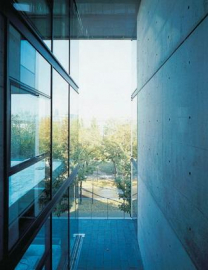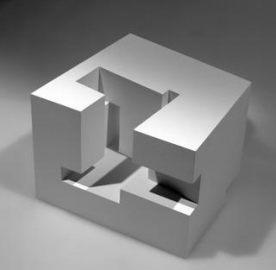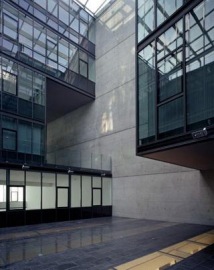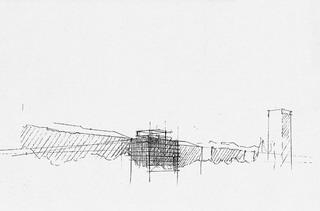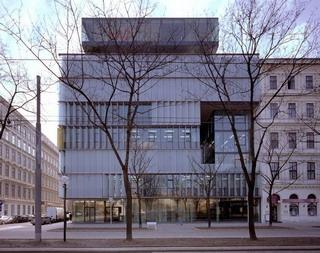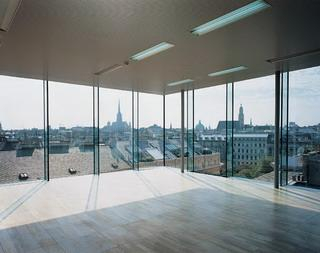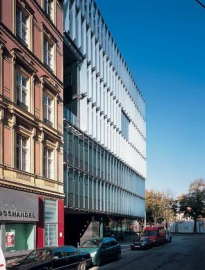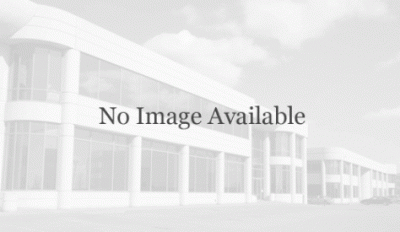Office and Commercial Building k47
Office and Commercial Building k47, 1010 Vienna
The k47 office building is the first new building to be built in the historic centre of the world cultural heritage city of Vienna for more than a decade. The building was built on the bank of the Danube Canal to replace the former Kaipalast which due to its structural instability had not been able to be restored. The idea of a new building in this sensitive context had aroused considerable public interest and controversy. For this reason, in 2001, the investors organised a limited competition which we were fortunate enough to win.
For us, the design posed the central question; how can one integrate a contemporary commercial building in an intact historical context while avoiding either provocative contrast or conservative subservience.
The height and volume of the seven storey building relate to those of the built surroundings. The optically separated hovering penthouse forms a strong landmark and creates a visual dialogue with the urban context at a higher level.
From the street the building can be read as an abstract, homogeneous cube, articulated through consciously positioned voids. Storey-high mechanised solar screens in satinised opal glass generate the appearance of the façade forming a relief-like, translucent second skin which relates, on an abstract level, in scale and articulation to the surrounding stucco architecture.
The highly plastic and sculptural internal court is conceived as a foil to the façade and offers a variety of spatial and functional possibilities on the different levels while communicating, through the cut-outs in the façade, with the external world. The space was conceived as a sculptural composition of solid and void, form and space, but is also an attempt to reconcile a clearly defined architectural space with the requirements for flexibility and indeterminate space use in the modern office. Through the varied penetrations in the façade, each floor plate is unique and so dimensioned that a wide range of uses, from assembly rooms to single cellular offices can be accommodated.
The building moves beyond conventional functionally minimised and hierarchically determinate space planning and suggests and open, communicative, interactive and personalised office environment.
henke und schreieck architekten
November 2004


